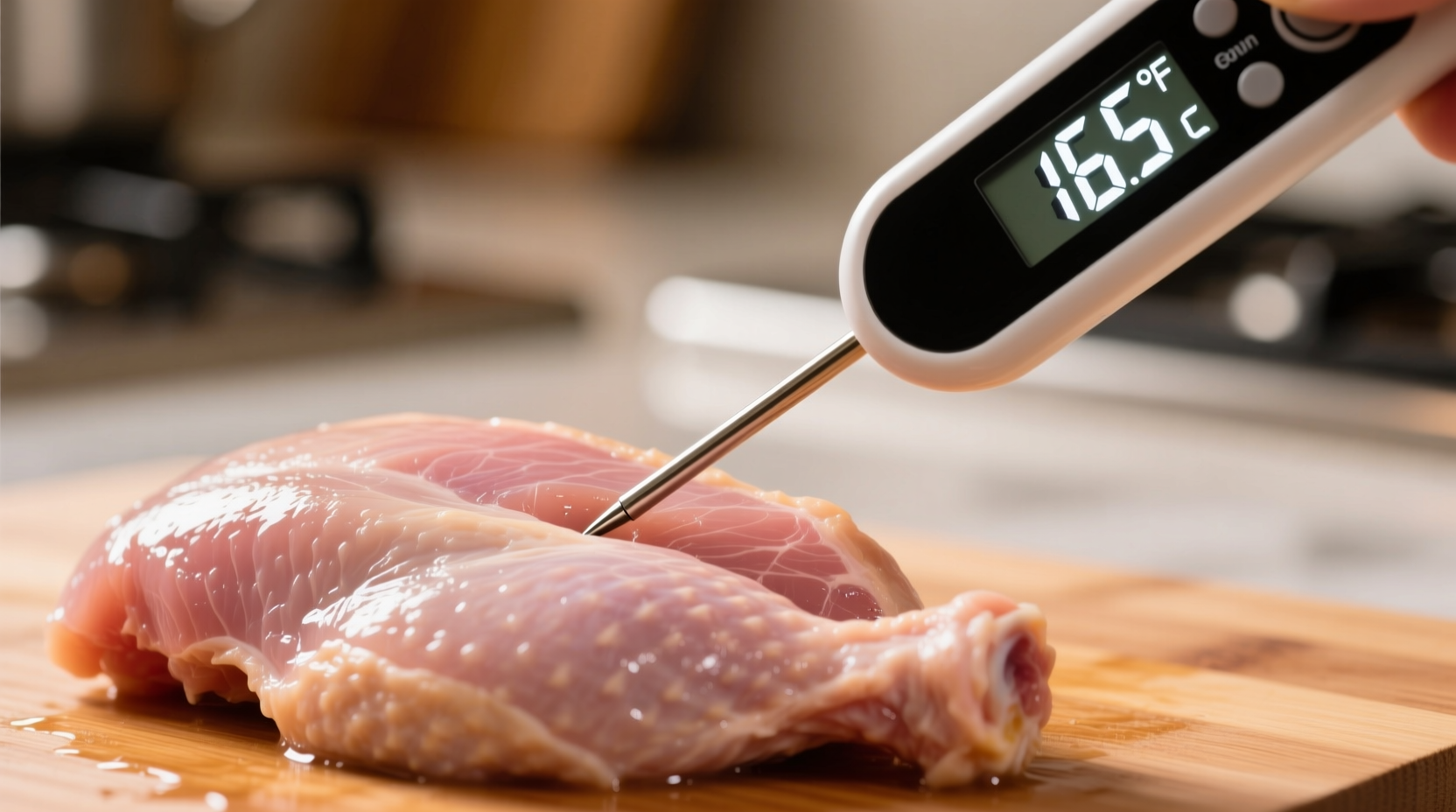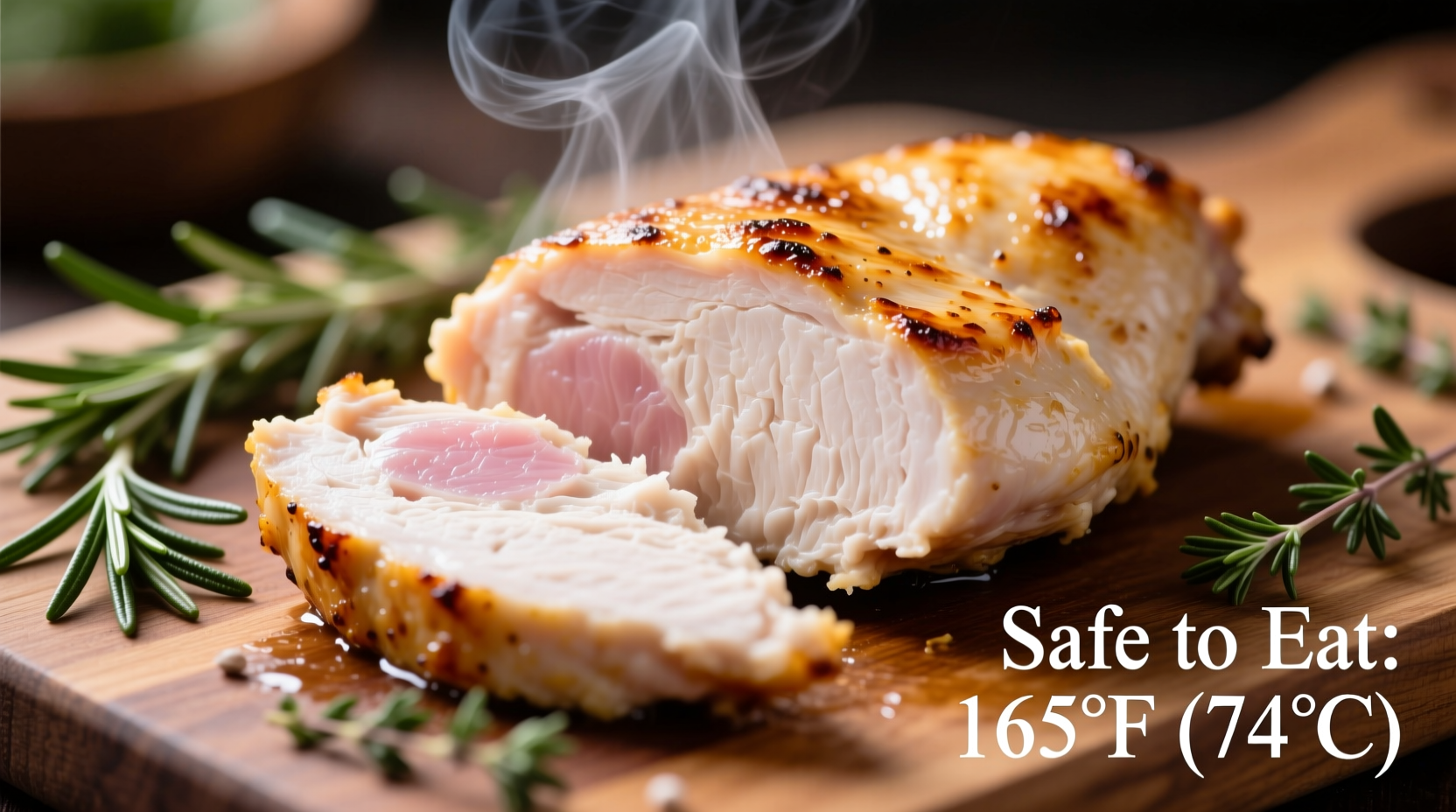The only reliable way to know chicken is safely cooked is by measuring its internal temperature with a food thermometer—it must reach 165°F (73.9°C) in the thickest part. Visual cues like color or juice clarity are unreliable indicators and should never replace thermometer verification.
Why Temperature Testing Beats Guesswork Every Time
Every year, millions suffer from foodborne illnesses linked to undercooked poultry. The USDA’s Food Safety and Inspection Service confirms that 165°F (73.9°C) is the critical threshold where harmful bacteria like salmonella and campylobacter are instantly destroyed. Relying on color changes or juice tests risks serious health consequences—studies show chicken can appear fully cooked at temperatures as low as 140°F while still harboring dangerous pathogens.

Your Step-by-Step Verification System
1. The Thermometer Test: Your Non-Negotiable Safety Check
Insert an instant-read thermometer into the thickest part of the meat, avoiding bones. Wait 15 seconds for an accurate reading. The USDA maintains this standard applies universally across all chicken preparations—whether boneless breasts, drumsticks, or whole roasted birds.
| Chicken Cut | Minimum Safe Temperature | Common Misconceptions |
|---|---|---|
| Chicken breasts | 165°F (73.9°C) | “White color means done” (can be misleading) |
| Thighs & drumsticks | 165°F (73.9°C) | “Dark meat should stay pink” (safety depends on temp, not color) |
| Ground chicken | 165°F (73.9°C) | “Looks firm so it’s safe” (bacteria distributed throughout) |
2. Visual & Texture Checks: Secondary Indicators Only
While thermometers provide definitive proof, these observations can complement your testing:
- Juice test: Clear (not pink) juices suggest doneness, but USDA research shows juices can run clear at unsafe temperatures
- Texture: Properly cooked chicken feels firm yet springy when pressed, but this varies by cut and cooking method
- Color: Meat should be opaque throughout, though dark meat naturally retains more pinkness even when safe
3. Avoiding Critical Mistakes That Compromise Safety
Professional kitchens consistently avoid these dangerous assumptions:
- Mistake: Testing only one spot
Solution: Check multiple thick areas, especially in whole birds - Mistake: Ignoring carryover cooking
Solution: Remove chicken at 160°F and let rest—temperature will rise 5° during resting - Mistake: Using visual cues as primary indicators
Solution: Always verify with thermometer regardless of appearance
Special Considerations for Different Cooking Methods
While the 165°F standard remains constant, different preparations require specific verification approaches:
Grilled Chicken
Check internal temperature at the center of the thickest piece. Grill marks create false confidence—surface browning occurs well below safe temperatures. The FDA Food Code specifically warns against relying on char patterns for doneness verification.
Sous Vide Preparation
When using precise temperature control methods, you can safely cook chicken at lower temperatures for extended periods (e.g., 150°F for 2.5+ hours). However, this requires specialized equipment and knowledge—for most home cooks, the standard 165°F remains the simplest safety guarantee.
Whole Roasted Chicken
Test three critical zones: breast, thigh, and wing joint. The CDC emphasizes that uneven cooking in whole birds creates particular risk—thighs often require 10-15 minutes longer than breasts to reach safe temperatures.
Why Old Methods Fail: The Science Behind Modern Guidelines
Food safety standards have evolved significantly as testing methods improved. In the 1980s, recommendations suggested 180°F for whole chickens—a guideline based on limited testing capabilities. Modern pathogen research, documented in the FDA’s Food Code, confirms 165°F provides instant pathogen destruction while preserving moisture. This evolution reflects decades of collaborative research between the USDA, CDC, and food science institutions.
Essential Thermometer Buying Guide
Not all thermometers deliver equal reliability. For chicken safety verification:
- Choose instant-read models with 2-3 second response times
- Verify calibration monthly using ice water (32°F) or boiling water (212°F)
- Look for probes no thicker than 1/16 inch to minimize meat damage
The National Poultry Improvement Plan rigorously tests thermometer accuracy—their certified models provide the highest confidence for home use.
When in Doubt, Throw It Out: The Safety Imperative
If you cannot verify proper temperature, discard questionable chicken. The USDA’s FoodKeeper app estimates that foodborne illness costs the average American household $1,000 annually in medical expenses and lost productivity. This small precaution protects your health far more effectively than risking illness through侥幸 (wishful thinking).











 浙公网安备
33010002000092号
浙公网安备
33010002000092号 浙B2-20120091-4
浙B2-20120091-4